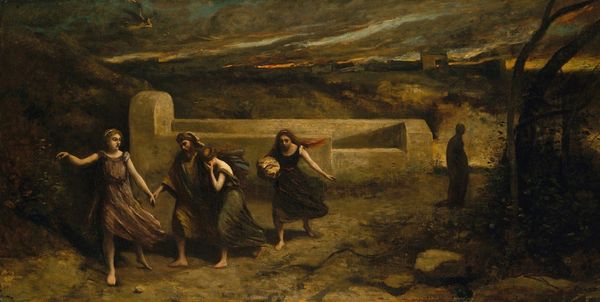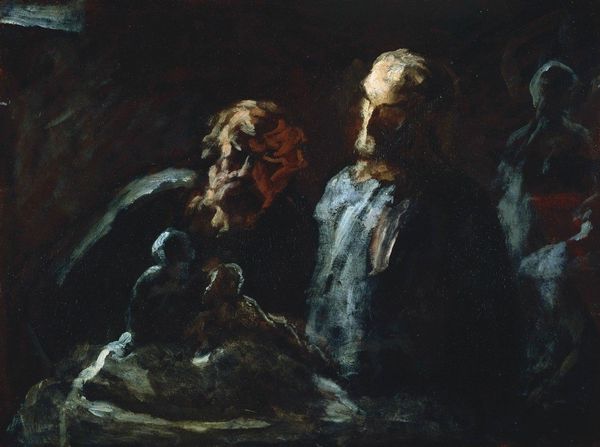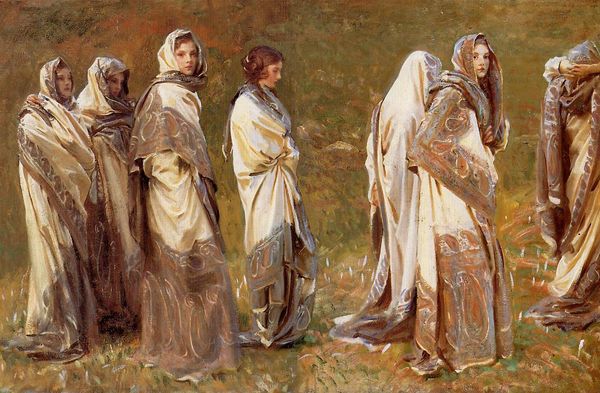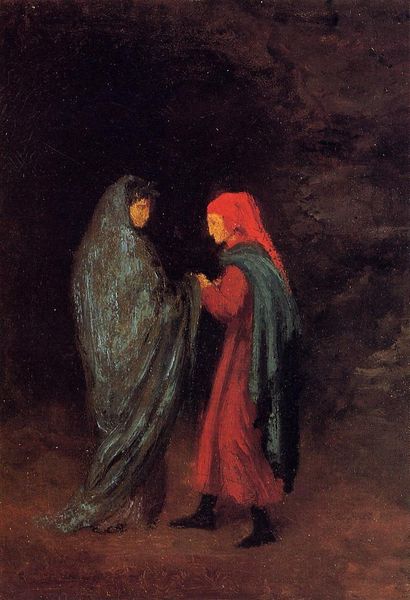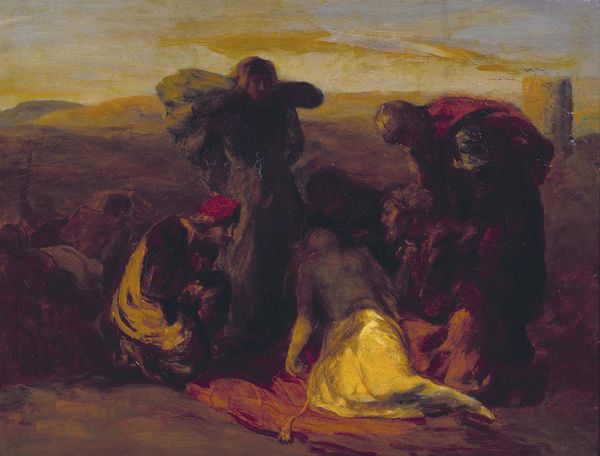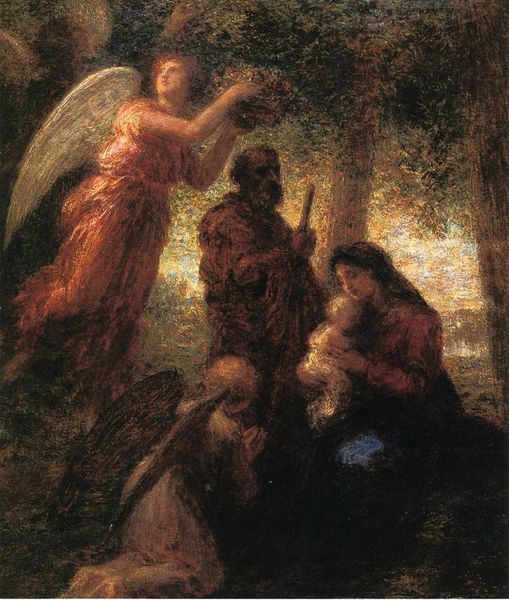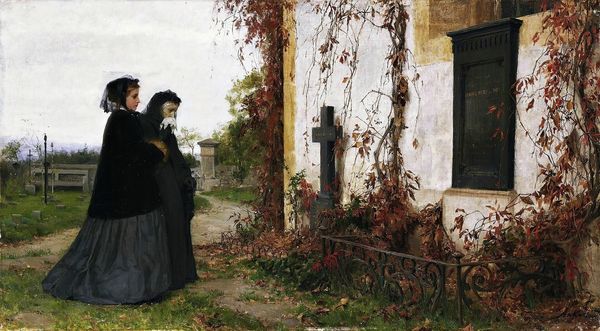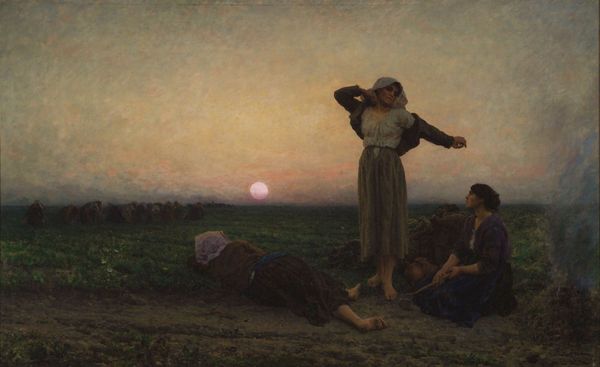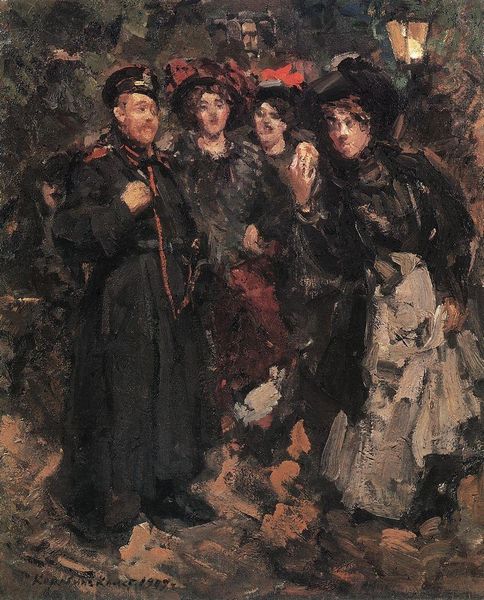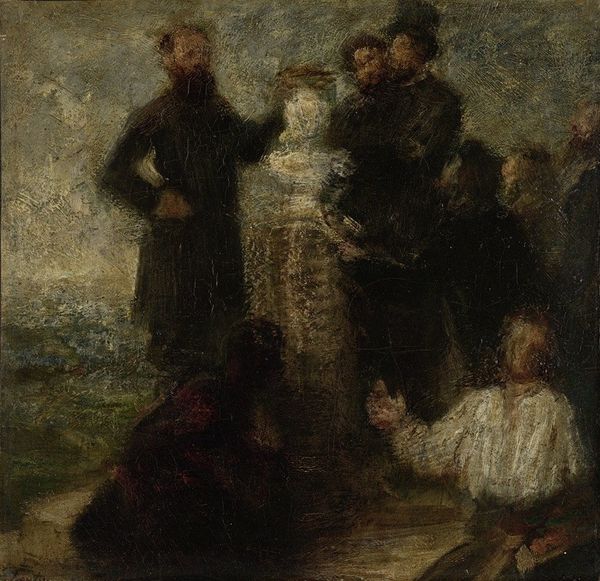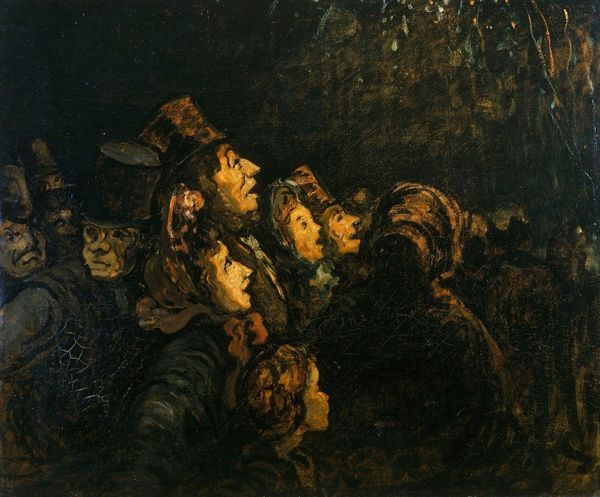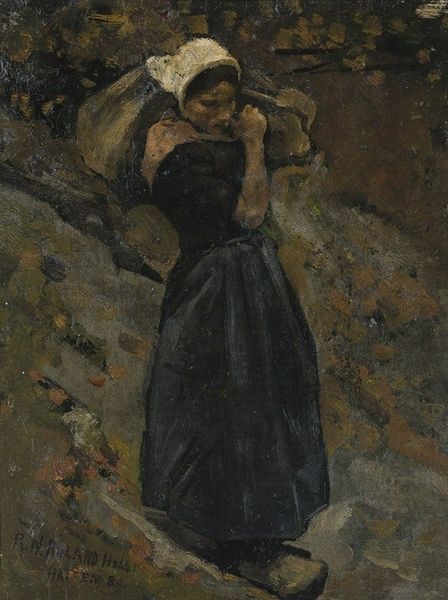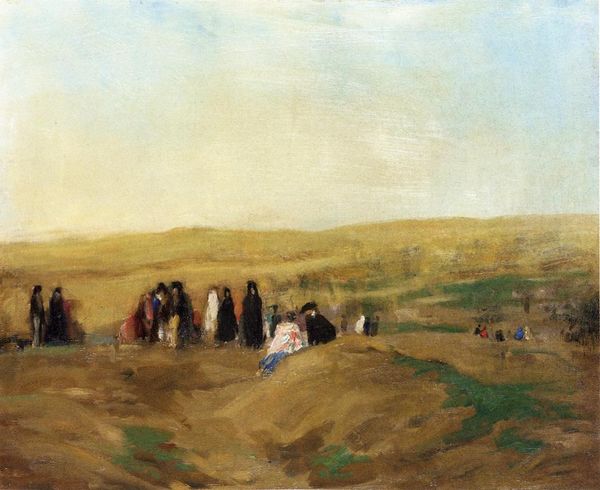
Copyright: Public domain
Editor: Émile Friant’s 1898 painting, "Sorrow," now housed in the Musée des Beaux-Arts de Nancy, depicts a group of mourners. The somber color palette really sets the tone, and the way the figures are draped in black evokes a deep sense of collective grief. How do you interpret this work, especially considering the historical context? Curator: This piece really speaks to the role of art in public mourning and commemoration, especially in late 19th-century France. Look at how Friant uses black, a color deeply associated with mourning, to visually unite these figures. Consider also, what does the composition suggest about the role of women in public displays of grief during this time? Editor: I notice the women are much more prominent than the men; their sorrow seems almost performative. Was that a common theme? Curator: Indeed. Art often dictated and reinforced societal norms. Think about the historical significance of the Belle Époque, and how images were consumed through salon exhibitions and reproduced widely. The way grief was publicly displayed often mirrored or was shaped by its artistic representations. Friant here capitalizes on our expectations and, perhaps, comments on them. Editor: So, the painting isn't just reflecting reality, but also actively shaping perceptions of grief in society? Curator: Precisely. Artists don't exist in a vacuum. They, and their creations, are part of an ongoing dialogue that shapes how we perceive the world and, more significantly, our relationship to social history. What are your closing thoughts? Editor: I’ve never thought about art as a mirror reflecting social norms, as much as an active participant shaping them! Curator: Exactly, and it’s by understanding the sociopolitical and institutional context in which artwork appears, we truly perceive the richness embedded.
Comments
No comments
Be the first to comment and join the conversation on the ultimate creative platform.
